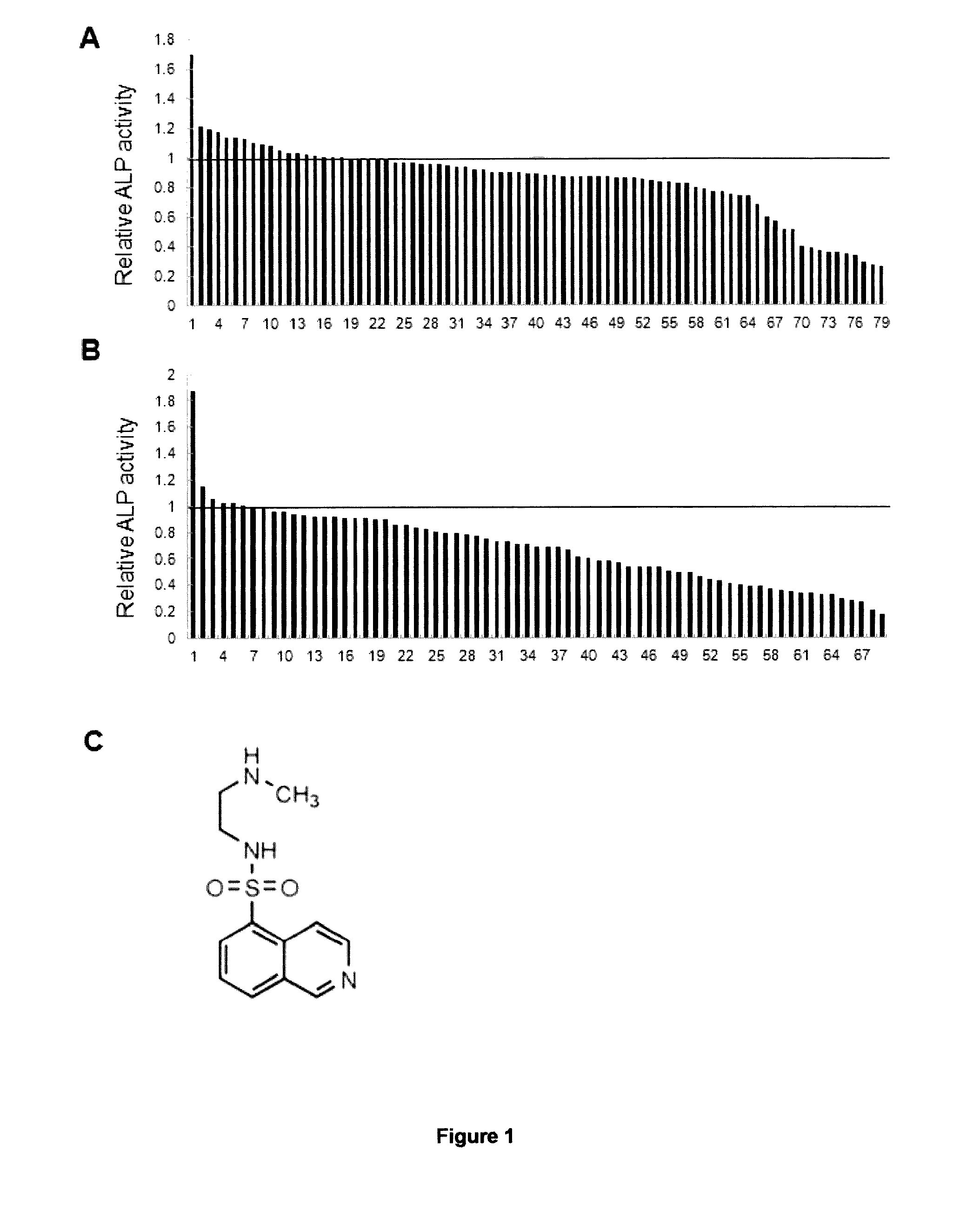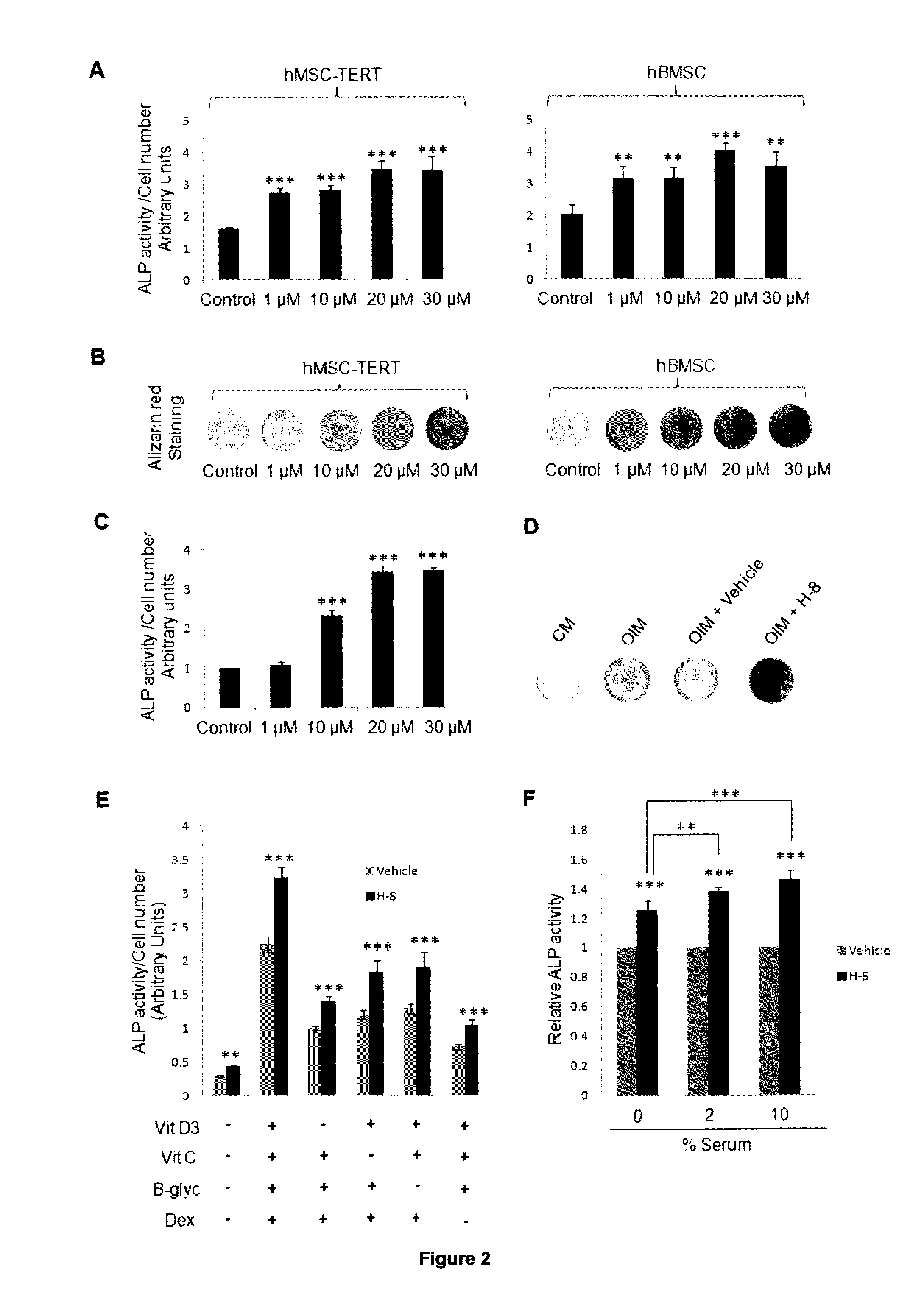Anabolic compounds for treating and preventing bone loss diseases
anabolic compounds and bone loss technology, applied in the field of isoquinolene derivatives, can solve the problems of increased increased bone loss risk, and increased bone loss, so as to reduce the risk of fracture in the afflicted subject, reduce the risk of bone fracture, and increase the formation of bon
- Summary
- Abstract
- Description
- Claims
- Application Information
AI Technical Summary
Benefits of technology
Problems solved by technology
Method used
Image
Examples
example
[0054]This invention will now be described in detail with reference to the following Example
Screening of the Small Molecule Kinase Inhibitor Library
Screening of Kinase Inhibitor Library Identified H-8 as a Potent Stimulator of ALP Activity
[0055]To identify novel molecules that can enhance osteoblast differentiation of hMSC, the present inventors screened a commercially available library of small molecule protein kinase inhibitors (Screen-Well™ Kinase Inhibitor Library, Biomol International®). This library contains 80 known kinase inhibitors of well-defined activity and covers a wide spectrum of signaling pathways. As a model for hMSC, the present inventors employed a a telomerized human mesenchymal stem cell line (hMSC-TERT). Each kinase inhibitor was added to the osteogenic inducing media (OIM) at 1 and 10 μM concentrations and ALP activity was determined 6 days after induction of differentiation. Several kinas inhibitors regulated ALP activity (FIG. 1) and among those, H-8 (N-[2-(...
PUM
| Property | Measurement | Unit |
|---|---|---|
| disorder | aaaaa | aaaaa |
| degenerative bone disorder | aaaaa | aaaaa |
| bone resorption | aaaaa | aaaaa |
Abstract
Description
Claims
Application Information
 Login to View More
Login to View More - R&D
- Intellectual Property
- Life Sciences
- Materials
- Tech Scout
- Unparalleled Data Quality
- Higher Quality Content
- 60% Fewer Hallucinations
Browse by: Latest US Patents, China's latest patents, Technical Efficacy Thesaurus, Application Domain, Technology Topic, Popular Technical Reports.
© 2025 PatSnap. All rights reserved.Legal|Privacy policy|Modern Slavery Act Transparency Statement|Sitemap|About US| Contact US: help@patsnap.com



